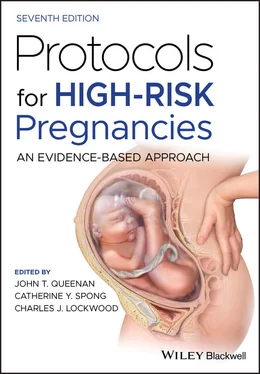Table 6.1 Indications for fetal echocardiography
| Familial risk factors |
| History of congenital heart disease (CHD) |
| Previous sibling with CHD |
| Paternal CHD |
| Second‐degree relative to fetus with CHD |
| Mendelian syndromes that include congenital heart disease (e.g., Noonan, tuberous sclerosis) |
| Maternal risk factors |
| Congenital heart disease |
| Cardiac teratogen exposure: |
| Lithium carbonate |
| Phenytoin |
| Valproic acid |
| Trimethadione |
| Carbamazepine |
| Isotretinoin |
| Paroxetine |
| Maternal metabolic disorders: |
| Diabetes mellitus |
| Phenylketonuria |
| In vitro fertilization |
| Fetal risk factors |
| Suspected cardiac anomaly |
| Extracardiac anomalies |
| Chromosomal |
| Anatomical |
| Fetal cardiac arrhythmia |
| Irregular rhythm |
| Tachycardia (greater than 200 bpm) in absence of chorioamnionitis |
| Fixed bradycardia |
| Nonimmune hydrops fetalis |
| Lack of reassuring four‐chamber view during basic obstetric scan |
| Monochorionic twins |
| Increased nuchal translucency space at 11–14 weeks of gestation |
Full fetal echocardiography includes obtaining all the views in the fetus routinely obtained in postnatal echocardiography ( Table 6.2) using both real‐time gray‐scale and color Doppler imaging. Additionally, spectral Doppler, cardiac biometry, and M‐mode data can be obtained as indicated. Fetal echocardiographers use these latter techniques variably. The two‐dimensional examination should be sufficient to exclude significant heart disease in the vast majority of affected individuals. The more sophisticated studies are especially useful in cases of suspected structural or functional abnormalities.
In a recent Practice Parameter, the AIUM has described required and optional components of the detailed fetal echocardiographic examination, shown in Table 6.3.
Table 6.2 Standard fetal echocardiographic views and what to see
| Four chamber |
| Situs: check fetal position and stomach |
| Axis of heart to the left |
| Intact interventricular septum |
| Atria approximately equal sizes |
| Ventricles approximately equal sizes |
| Free movement of mitral and tricuspid valves |
| Heart occupies about one‐third of chest area |
| Foramen ovale flap (atrial septum primum) visible in left atrium |
| Long‐axis left ventricle |
| Intact interventricular septum |
| Continuity of the ascending aorta with mitral valve posteriorly |
| Interventricular septum anteriorly |
| Short axis of great vessels |
| Vessel exiting the anterior (right) ventricle bifurcates, confirming it is the pulmonary artery |
| Aortic arch |
| Vessel exiting the posterior (left) ventricle arches and has three head vessels, confirming it is the aorta |
| Pulmonary artery–ductus arteriosus |
| Continuity of the ductus arteriosus with the descending aorta |
| Venous connections |
| Superior and inferior vena cavae enter right atrium |
| Pulmonary veins entering left atrium from both right and left lungs |
Table 6.3 AIUM recommended components of detailed fetal echocardiographic exam
| Gray‐scale imaging Four‐chamber view including pulmonary veinsLeft ventricular outflow tractRight ventricular outflow tractBranch pulmonary artery bifurcationThree‐vessel view (including view with PA bifurcation and more superior view with ductal arch)Short‐axis views (“low” for ventricles, “high” for outflow tracts)Long‐axis view (if clinically relevant)Aortic archDuctal archSuperior (SVC) and inferior vena cava (IVC) Color Doppler sonography Systemic veins (including superior and inferior vena cava and ductus venosus)Pulmonary veins (at least two, one right vein and one left vein)Atrial septum and foramen ovaleAtrioventricular valvesVentricular septumSemilunar valvesDuctal archAortic arch Pulsed Doppler sonography Right and left atrioventricular valvesRight and left semilunar valvesPulmonary veins (at least two; one right vein and one left vein)Ductus venosusSuspected structural or flow abnormality on color Doppler sonography Heart rate and rhythm assessment Cardiac biometry (z‐scores recommended) Aortic and pulmonary valve annulus in systole (absolute size with comparison of left‐ to right‐sided valves)Tricuspid and mitral valve annulus in diastole (absolute size with comparison of left‐ to right‐sided valves) Optional biometry Right and left ventricular lengthsAortic arch and isthmus diameter measurements from the sagittal arch view or three vessels and trachea view with comparison of aortic isthmus to ductus arteriosusMain pulmonary artery and ductus arteriosus measurementsEnd‐diastolic ventricular diameter just inferior to the atrioventricular valve leaflets in the short or long axis viewThickness of the ventricular free walls and interventricular septum in diastole just inferior to the atrioventricular valvesAdditional measurements if clinically relevant, including:systolic ventricular dimensions (short or long axis views)transverse atrial dimensionsbranch pulmonary artery diameters Cardiac function assessment (if clinically relevant) Fractional shorteningVentricular strainMyocardial performance index |
When a cardiac anomaly is found, a full detailed fetal scan to detect any other extracardiac anomalies is mandatory. Many fetal syndromes include cardiac anomalies, and accurate counseling requires complete enumeration of associated anomalies. Fetal karyotype testing should be offered to the parents, as chromosome abnormalities are seen in a large segment of fetuses with congenital heart disease. Additional testing for a microdeletion of chromosome 22q11 can be helpful in fetuses with conotruncal malformations (e.g., tetralogy of Fallot, truncus arteriosus). As for all fetal anomalies, microarray testing for microdeletions and microduplications has also become routine. In selected cases specific gene sequencing or even whole exome or genome sequencing is indicated.
Overall survival once a cardiac lesion is found depends on the nature of the cardiac problem, the presence of extracardiac anomalies, the karyotype, and the presence of fetal hydrops. Fetal hydrops in association with structural heart disease is virtually universally fatal. Aneuploid fetuses may have dismal prognoses even in the absence of heart disease; for example, fetal trisomy 18 may make repairing even a straightforward ventricular septal defect inadvisable.
Lesions that can be repaired into a biventricular heart carry a better long‐term prognosis than those that result in a univentricular heart. In general, infants known to have congenital heart disease prenatally do better than those whose cardiac defects are only found after birth.
Fetal arrhythmias
Diagnosis and management
The largest group of fetal arrhythmias are intermittent and due to atrial, junctional or ventricular extrasystoles. They carry a small risk of co‐existent structural abnormality. A greater risk exists of an unrecognized tachyarrhythmia, or the development of a tachyarrhythmia later in gestation. Atrial extrasystoles predispose the fetus to development of reentrant atrial tachycardia, which can lead to fetal hydrops. We recommend weekly auscultation of the fetal heart, along with avoidance of caffeine or other sympathomimetics, until resolution of the arrhythmia.
Читать дальше












